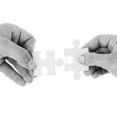Cultural Awareness Training
Recognising cultural patterns
This training is all about learning to recognise and understand cultural patterns in people at work, in a context of colleagues, teams, managers and rules.
All learning starts with self-awareness. In order to increase your intercultural effectiveness you need to reflect on your own cultural pattern first. What are my strengths and my weaknesses, how do others perceive me, and what could be the consequences?
The next step is to take an appreciative point of view towards others, even if you perceive their behaviour as strange, abnormal, unpredictable or frustrating. This requires you to postpone judgement.
No one pattern is ‘right’ or ‘wrong’. In order to improve performance, reframing different cultural patterns as new and potentially useful will help you transform cultural tensions into opportunities.






